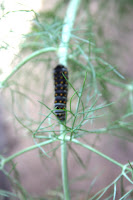New Annuals for 2016 Gardens

Whether you are looking for new annuals for the sun or shade, containers or beds, there is something unique for next spring. Proven Winners has come out with ten new pink flowering annuals that you can mix or match to renew an existing bed and make a container garden. Mini-petunias Proven Winners Garden Bells mini-petunias have been popular container plants for several years. They never have to be deadheaded and can take the heat. Their Latin name is Calibrachoa and the new colors include Garden Rose and Holy Moly (yellow and pink stripes). Magentamen is a new, deep rose, Gerbera Daisy bedding plant that matures at 12-20 inches tall. They are also introducing a new Rocapulco Wisteria Impatiens with double flowers for shade or part shade. The flowers are white and purple – ideal to brighten an area under perennials. Also for the shade the new sweet potato vine, Sweet Caroline Sweetheart Lime, is bright green but grows only 14-inches. Have you heard ...








